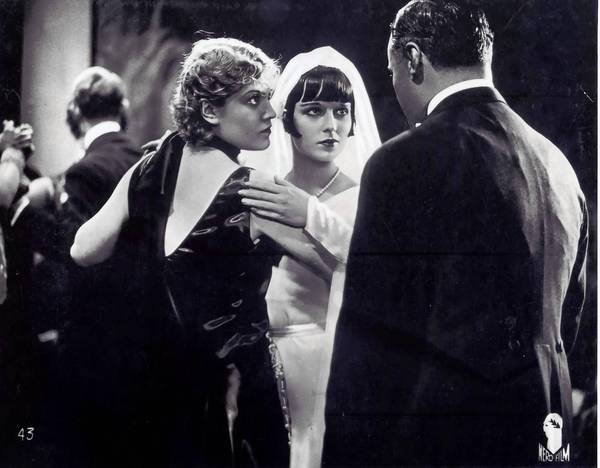 HARLEY LOCO: A MEMOIR OF HARD LIVING, HAIR AND POST-PUNK, FROM THE MIDDLE EAST TO THE LOWER EAST SIDE
HARLEY LOCO: A MEMOIR OF HARD LIVING, HAIR AND POST-PUNK, FROM THE MIDDLE EAST TO THE LOWER EAST SIDE
By Rayya Elias
Viking Penguin
By Clare McBride
Contributing Writer
I adore the ’80s—the colors, the androgyny, the everything. This is mostly due to watching VH1‘s I LOVE THE ’80s ad nauseum at a formative age, which also means that my vision of the ’80s is a particularly sanitized one. I didn’t realize that until I was watching PARIS IS BURNING (1990), the documentary about queer New York’s drag ball culture in the late ‘80s, and saw, briefly, the old Times Square. As much as I love the ’80s, there’s still much to learn, and that’s when HARLEY LOCO popped up on NetGalley for me. A memoir by a queer woman of color-cutting hair and struggling with drug addiction in New York in the ’80s? Sometimes the universe is kind.
HARLEY LOCO is the story of Rayya Elias. In the ’60s, when Elias was a little girl, her family fled the political strife in Syria for the (relative) safety of Detroit, where she grew up. Struggling with the conflict between the American culture she desperately wanted to fit into, her own sexuality, and her traditional family, she fell into drug and alcohol use at a young age. After high school, she began working in a salon and working on her own music, two occupations that eventually brought her to New York. Things were looking up—a girlfriend, a record deal—until Elias’ drug use got the better of her and she spiraled into addiction. It robbed her of her friends, her family, and her dignity, and her struggles to overcome her addiction were herculean.
This memoir opens with an introduction from Elizabeth Gilbert, author of EAT, PRAY, LOVE, praising both close friend Elias herself and Elias’ writing style to high heaven. I’ll be honest, it made me a little nervous. I’ve not read any Gilbert at all, but it did feel a little like someone quite popular assuring everyone that their friend was totally cool. It struck me as slightly nepotistic, which is sort of a poor way to start with a book. But, soon enough, we’re with Elias herself and, as promised by Gilbert, her writing style does feel natural and unforced, straightforward and human. This does mean that there’s very rarely moments of sparkling wordplay; my commonplace entry for this book is quite sparse (but, it must be said, present, which I can’t say for every book I read). But the plainness of the style makes way for Elias’ life.
And what a life! It’s absolutely stuffed with material—dealing with one’s sexuality in the ’70s, being a successful hair stylist in the let’s-call-it experimental ’80s, being a moderately successful music act at the same time in New York, negotiating two cultures, her jail time, struggling with toxic relationship after toxic relationship, and, of course, the all-consuming drug addiction and her multiple lapses.
Unfortunately, Elias’ jam-packed life doesn’t quite all fit into HARLEY LOCO. Her plain, natural style keeping out of the way of the content is admirable, but it also means it feels like a Cliffs Notes version of her life. Her relationship with the polyamorous Lana is examined in great detail, but the succeeding women in her life are written about in less and less detail, until she opens a chapter mentioning a girl she’d been getting serious with. Everything is touched on, but precious little is examined—she praises her own music without getting too far into the creative process beyond “magical” (a similar thing occurs with hairstyling), she glosses over returning to Syria in the midst of a seven-year struggle to get sober, and she doesn’t even go into enough detail about the fact that she shared a bathroom with Quentin Crisp. She’s got a fantastic handle on why she turned to drugs—there’s a passage where she compares walking into the hotel lobby of a nice hotel with her sister while she’s disgusting after spending weeks homeless and high to her experience in high school. It’s fear-based. Getting high is the only way Elias could relax. There’s a staggering moment when Elias gives you the number of years she spent strung-out versus years sober, and you realize she’s including her childhood. But this reflection doesn’t extend to the rest of the memoir, which ends with her final wake-up call and doesn’t examine the process of putting her life back together again. Given the rich material here, it’s frustrating.
On a much, much lighter note, it definitely served its function as a means of ’80s voyeurism. Elias finds her people among new wave and dark wave freaks, all intriguingly dressed, but it’s the Lower East Side you really get a feel for. Late in the memoir, Elias maps her own journey to get clean against how the neighborhood was cleaned up, and it’s a particularly rich and beloved background. Her style means that you don’t get too much into it, but you can catch the taste of it.
Elias mentions her music in the memoir, for obvious reasons (and in increasingly glowing terms), and you can listen to a few of her songs at her Website. Five of the songs are, although begun at different points in her life, completed fairly recently, but “Nothing Matters” is an actual track from circa 1985/1986. It’s a fascinating window into Elias’ life at the time; I recommend giving it a listen.
Bottom line: An interesting life is hurt by the author’s plain style in HARLEY LOCO—everything is so interesting, but there’s little actual reflection. An interesting portrait of the Lower East Side in the ‘80s, but other than that, I’d give it a pass.
This article was originally published on The Literary Omnivore and is reprinted with permission.


